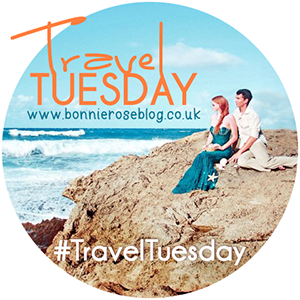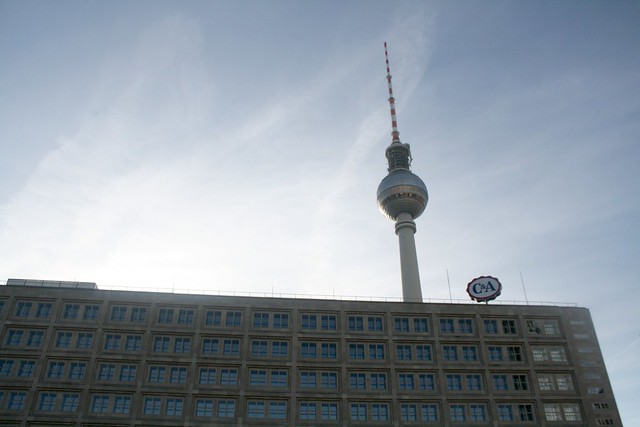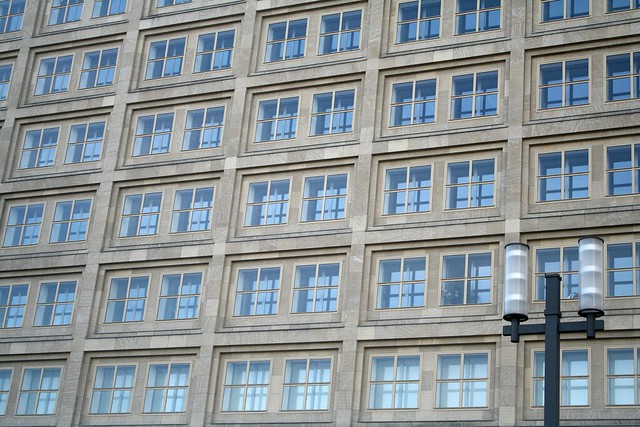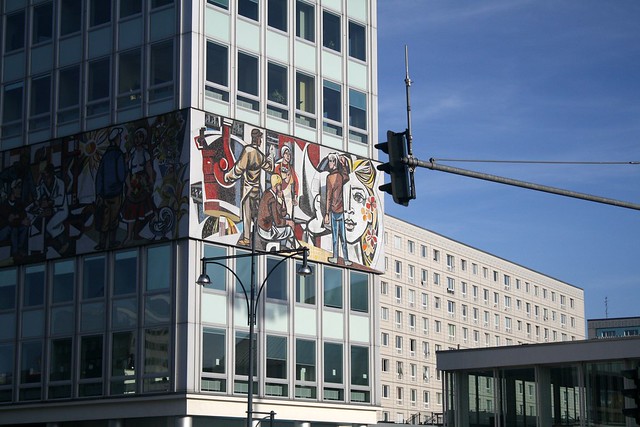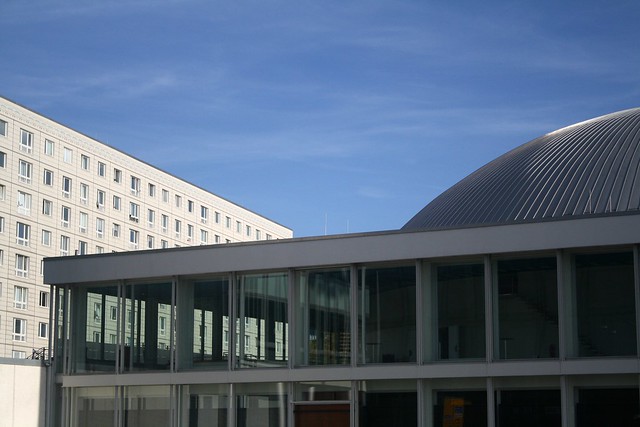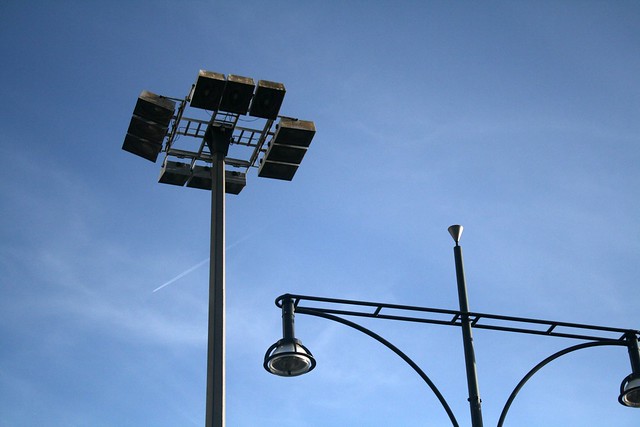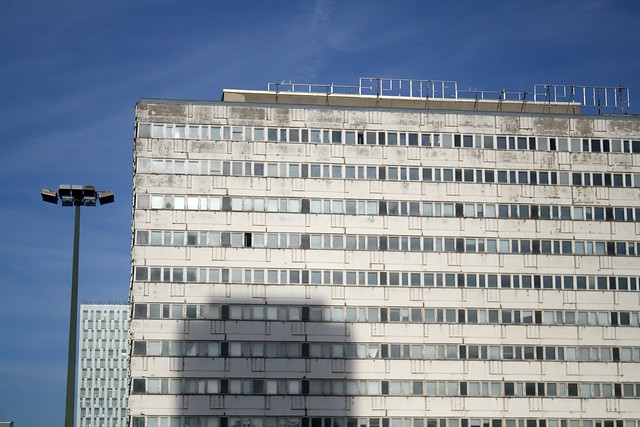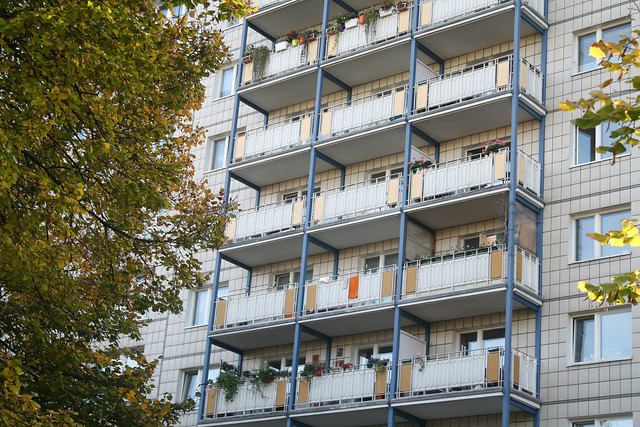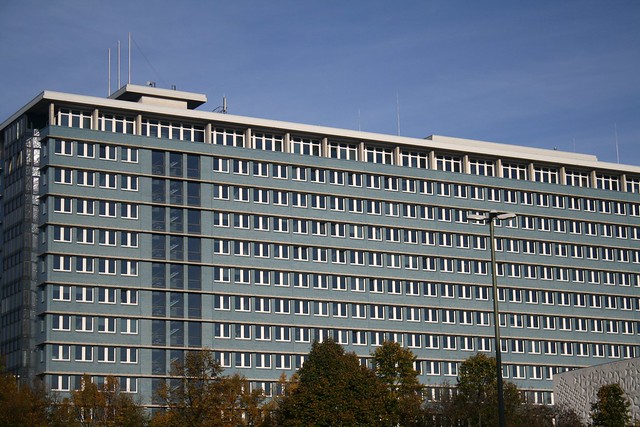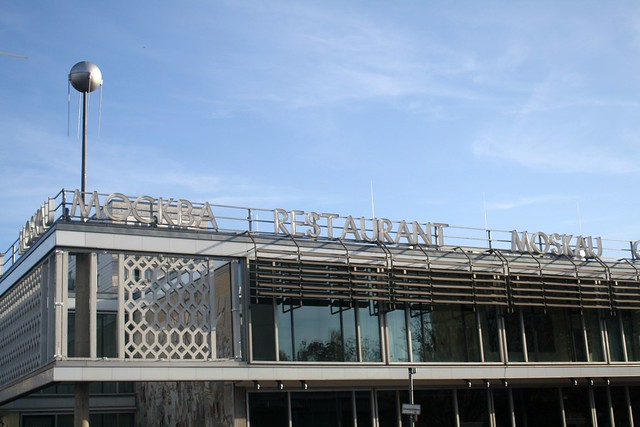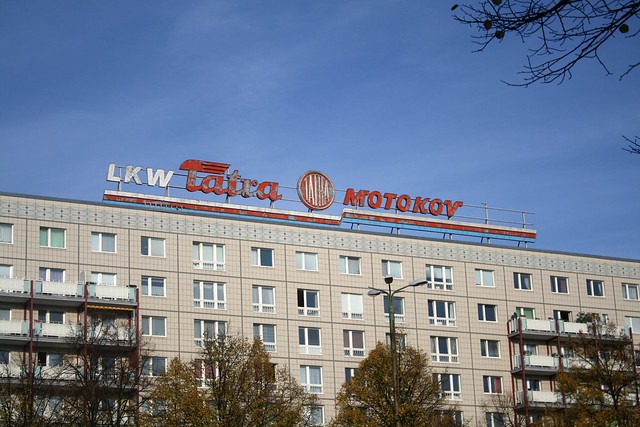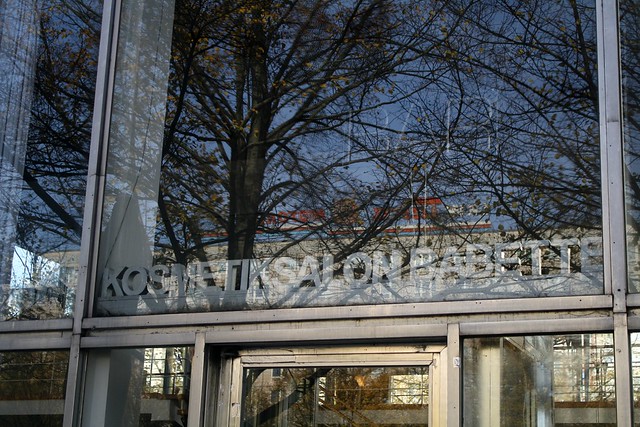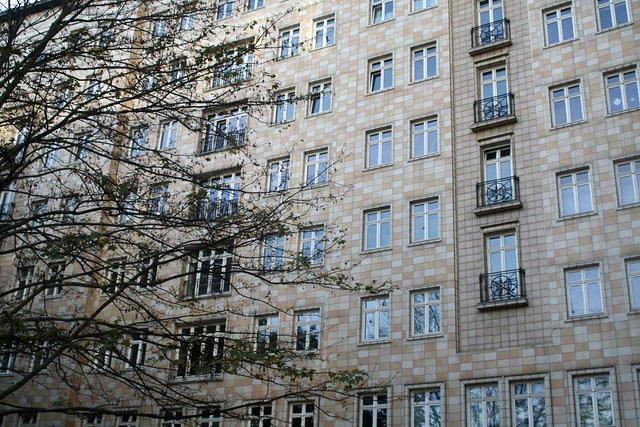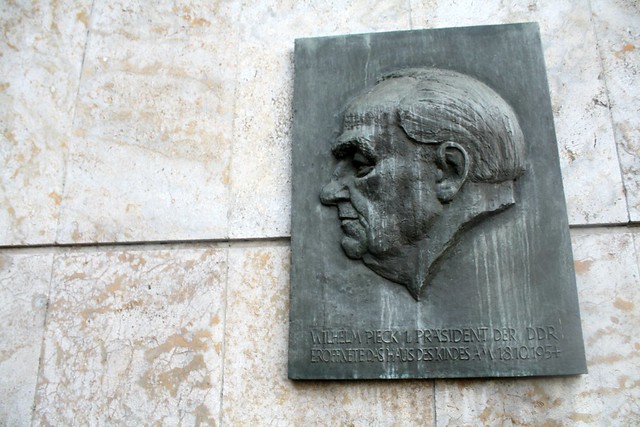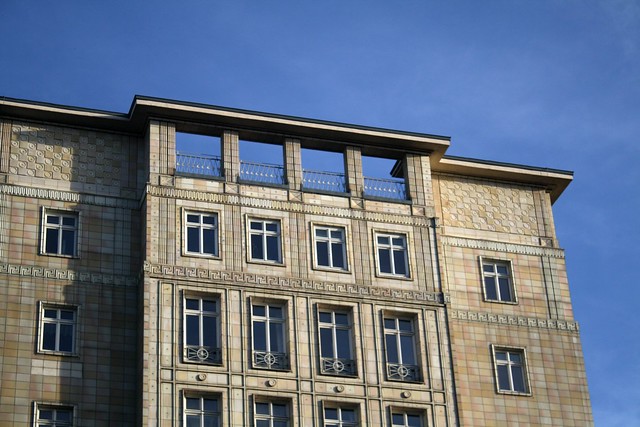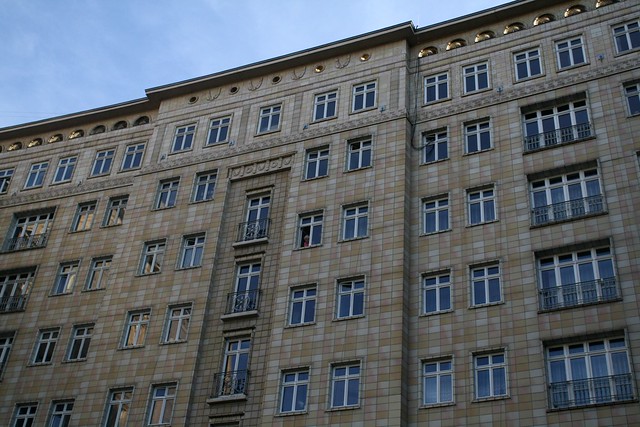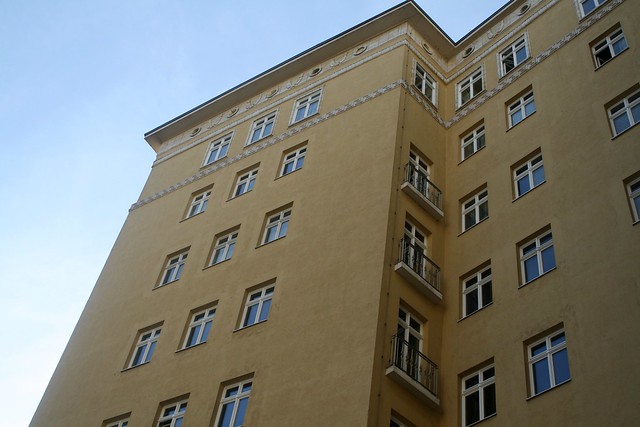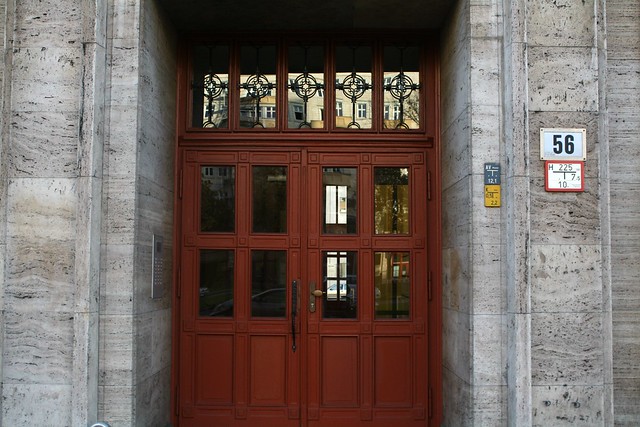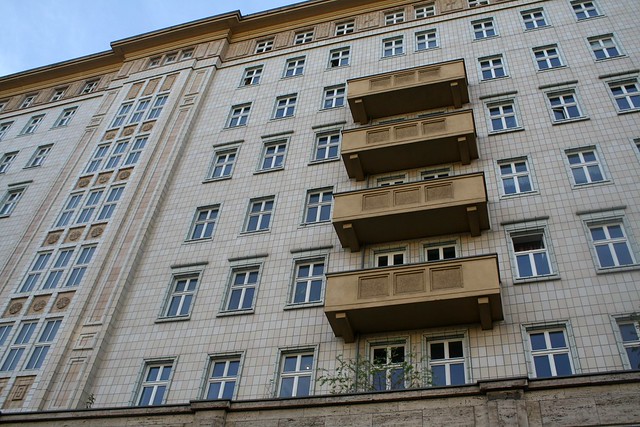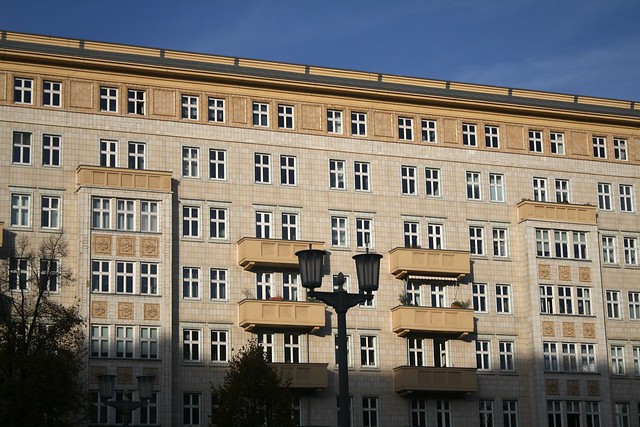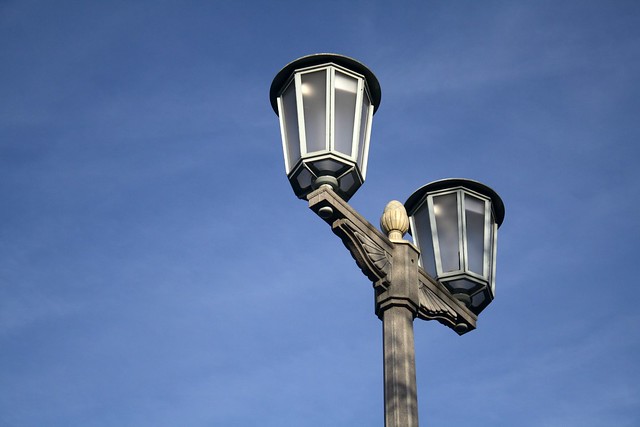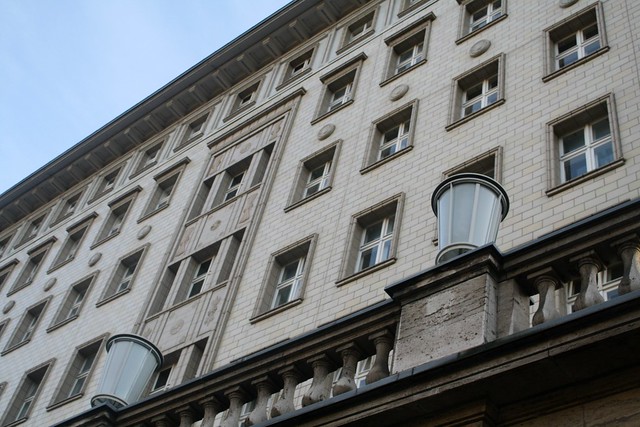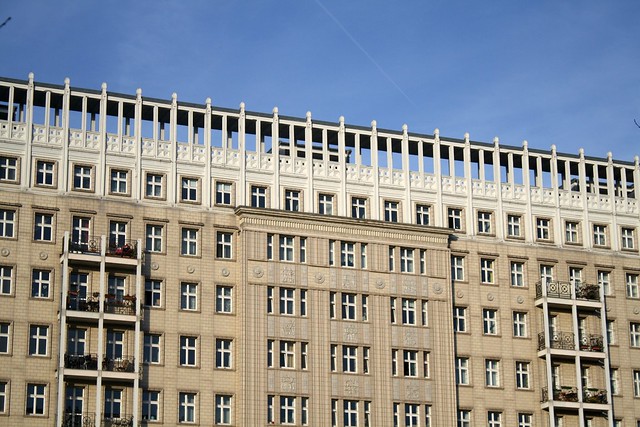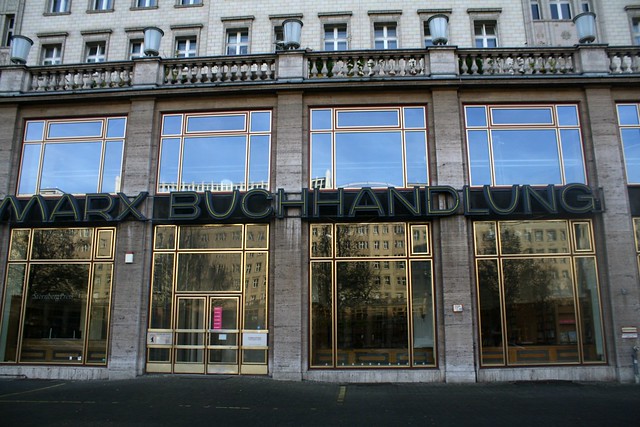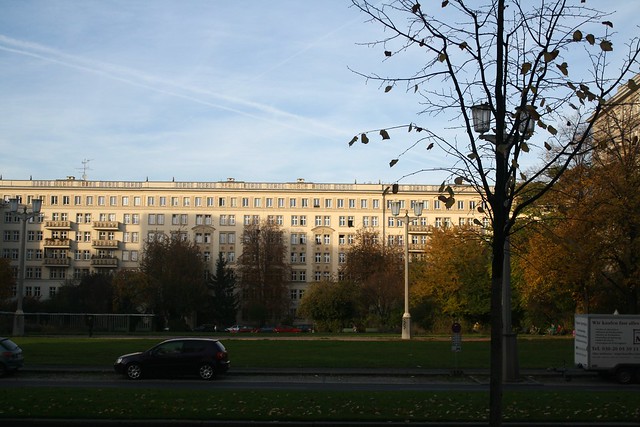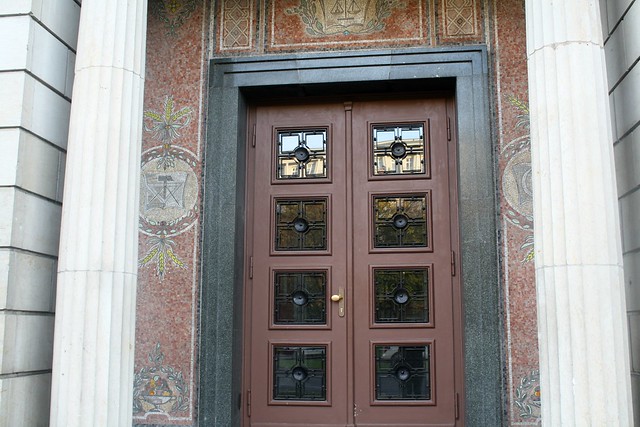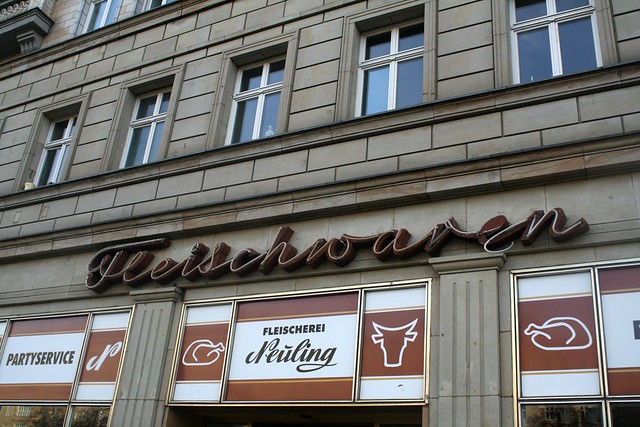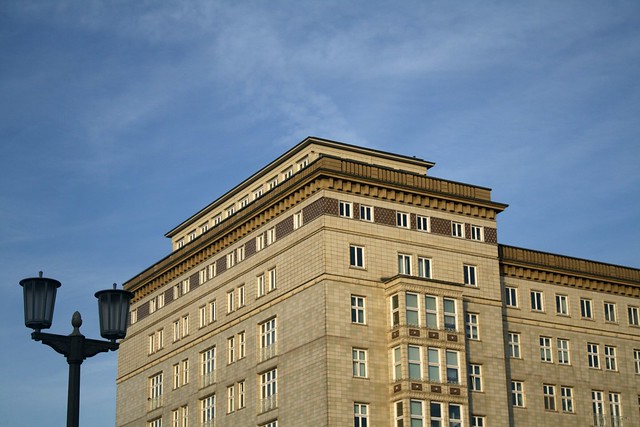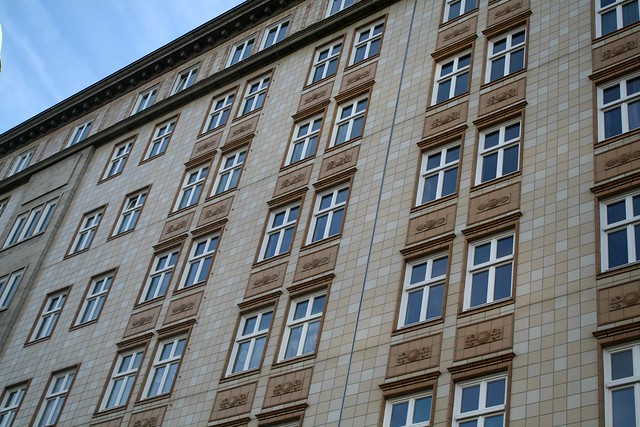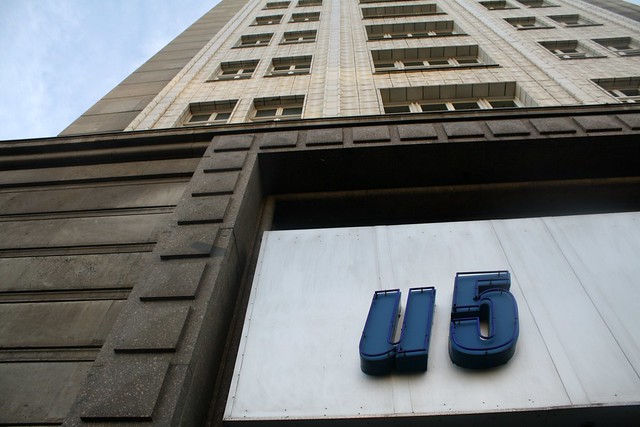For the first nine months that I lived in Berlin, I didn’t leave the city at all, except to head to neighboring Potsdam a couple times with my parents and friends. And though I’ve traveled a bit since then, both in Germany and elsewhere, living in Berlin makes it really easy to explore a lot without traveling far.
Back in November, on one of the last sunny weekends of the year, I suggested we do just that. But instead of venturing to a new part of town, we headed to Karl-Marx-Allee, a mere two or three kilometers away. It’s by no means an unfamiliar part of town, but every time I pass it, or when I’m riding my bike down it, I find myself marveling at the architecture—plus, a fellow Slow Travel Berlin contributor wrote a piece about the signage on the street, which is one of the more intriguing parts, and I wanted to see those signs and take some pictures. So our walk along was a way of exploring it closer up and more in depth.
We started off at Alexanderplatz, which features a lot of GDR-esque architecture (like the Haus des Lehrers), and slowly made our way down to the end, at Frankfurter Tor. There’s a slow progression, beginning with standard Plattenbauten, both with and without signs from former-Soviet Union companies on top, and transforming into more of the wedding-cake style of Stalinist architecture (which makes sense, as Karl-Marx-Allee was once known as Stalinallee, from 1949 to 1961). But perhaps the most interesting part is a series of placards that line the street on both sides, detailing the history of the buildings and showing off old pictures from the middle of the 1900s. I didn’t realize they were there until this walk, and they made it that much more interactive and informative. I’d definitely recommend it to anyone interested in architecture, Stalinism, or even just Berlin’s history.
